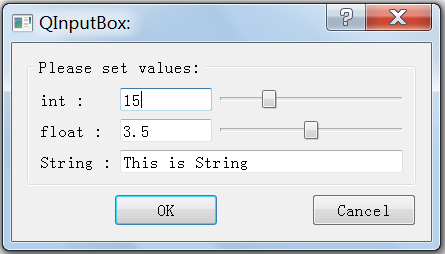tensorflow创建变量以及根据名称查找变量
环境:Ubuntu14.04,tensorflow=1.4(bazel源码安装),Anaconda python=3.6
声明变量主要有两种方法:tf.Variable和 tf.get_variable,二者的最大区别是:
(1) tf.Variable是一个类,自带很多属性函数;而 tf.get_variable是一个函数;
(2) tf.Variable只能生成独一无二的变量,即如果给出的name已经存在,则会自动修改生成新的变量name;
(3) tf.get_variable可以用于生成共享变量。默认情况下,该函数会进行变量名检查,如果有重复则会报错。当在指定变量域中声明可
以变量共享时,可以重复使用该变量(例如RNN中的参数共享)。
下面给出简单的的示例程序:
import tensorflow as tf
with tf.variable_scope('scope1',reuse=tf.AUTO_REUSE) as scope1:
x1 = tf.Variable(tf.ones([1]),name='x1')
x2 = tf.Variable(tf.zeros([1]),name='x1')
y1 = tf.get_variable('y1',initializer=1.0)
y2 = tf.get_variable('y1',initializer=0.0)
init = tf.global_variables_initializer()
with tf.Session() as sess:
sess.run(init)
print(x1.name,x1.eval())
print(x2.name,x2.eval())
print(y1.name,y1.eval())
print(y2.name,y2.eval())
输出结果为:
scope1/x1:0 [ 1.] scope1/x1_1:0 [ 0.] scope1/y1:0 1.0 scope1/y1:0 1.0
1. tf.Variable(…)
tf.Variable(…)使用给定初始值来创建一个新变量,该变量会默认添加到 graph collections listed in collections, which defaults to [GraphKeys.GLOBAL_VARIABLES]。
如果trainable属性被设置为True,该变量同时也会被添加到graph collection GraphKeys.TRAINABLE_VARIABLES.
# tf.Variable __init__( initial_value=None, trainable=True, collections=None, validate_shape=True, caching_device=None, name=None, variable_def=None, dtype=None, expected_shape=None, import_scope=None, constraint=None )
2. tf.get_variable(…)
tf.get_variable(…)的返回值有两种情形:
使用指定的initializer来创建一个新变量;
当变量重用时,根据变量名搜索返回一个由tf.get_variable创建的已经存在的变量;
get_variable( name, shape=None, dtype=None, initializer=None, regularizer=None, trainable=True, collections=None, caching_device=None, partitioner=None, validate_shape=True, use_resource=None, custom_getter=None, constraint=None )
3. 根据名称查找变量
在创建变量时,即使我们不指定变量名称,程序也会自动进行命名。于是,我们可以很方便的根据名称来查找变量,这在抓取参数、finetune模型等很多时候都很有用。
示例1:
通过在tf.global_variables()变量列表中,根据变量名进行匹配搜索查找。 该种搜索方式,可以同时找到由tf.Variable或者tf.get_variable创建的变量。
import tensorflow as tf
x = tf.Variable(1,name='x')
y = tf.get_variable(name='y',shape=[1,2])
for var in tf.global_variables():
if var.name == 'x:0':
print(var)
示例2:
利用get_tensor_by_name()同样可以获得由tf.Variable或者tf.get_variable创建的变量。
需要注意的是,此时获得的是Tensor, 而不是Variable,因此 x不等于x1.
import tensorflow as tf
x = tf.Variable(1,name='x')
y = tf.get_variable(name='y',shape=[1,2])
graph = tf.get_default_graph()
x1 = graph.get_tensor_by_name("x:0")
y1 = graph.get_tensor_by_name("y:0")
示例3:
针对tf.get_variable创建的变量,可以利用变量重用来直接获取已经存在的变量。
with tf.variable_scope("foo"):
bar1 = tf.get_variable("bar", (2,3)) # create
with tf.variable_scope("foo", reuse=True):
bar2 = tf.get_variable("bar") # reuse
with tf.variable_scope("", reuse=True): # root variable scope
bar3 = tf.get_variable("foo/bar") # reuse (equivalent to the above)
print((bar1 is bar2) and (bar2 is bar3))
以上就是本文的全部内容,希望对大家的学习有所帮助,也希望大家多多支持【听图阁-专注于Python设计】。

